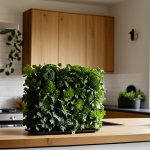Essential Ingredients for Yorkshire Pudding
Understanding the Yorkshire pudding core ingredients is fundamental to mastering this classic dish. The essential recipe elements include flour, eggs, and milk, each playing a crucial role in the batter’s structure and final texture.
Flour acts as the base, providing the necessary gluten for elasticity and structure. Eggs contribute both richness and binding power; their proteins help the pudding hold its shape while also assisting in the rise. Milk adds moisture and helps create a batter that is fluid enough to expand yet firm enough to set with a crisp exterior.
Additional reading : What are the secrets to crafting a classic steak and kidney pie?
Quality and freshness of these ingredients directly influence the pudding’s outcome. Fresh eggs ensure the batter aerates well, while good-quality flour guarantees consistent texture. Fresh milk maintains smoothness and helps avoid off-flavors that can occur with older dairy products.
Ingredient ratios are critical for an optimal rise and texture. A common approach balances equal volumes of flour, eggs, and milk, often using weights or volumes to ensure accuracy. For instance, too much flour can make the batter dense, while insufficient eggs may result in poor structure. The right balance allows the Yorkshire pudding to be airy, with a golden-brown crispness on the outside and a soft interior.
Also to see : How can you prepare a savory steak and ale pie?
Attention to these batter components—flour, eggs, and milk—and their precise ratios forms the foundation of a successful Yorkshire pudding recipe. The interplay of these ingredients ultimately determines not only the pudding’s rise but also its texture and flavor.
Step-by-Step Yorkshire Pudding Recipe
Mastering how to make Yorkshire pudding starts with precise preparation steps that ensure the batter develops the ideal texture and rise. Begin by thoroughly mixing the batter components—flour, eggs, and milk—until smooth and free of lumps. Achieving the correct batter consistency is crucial; it should be fluid enough to pour easily but thick enough to coat the back of a spoon. Too thin, and the pudding may collapse; too thick, and it won’t rise properly.
Once mixed, resting the batter for at least 30 minutes is essential. This resting period allows the gluten in the flour to relax and the starches to absorb moisture, improving the batter structure and resulting in a better puff during baking. Skipping this step often leads to a flat or dense pudding.
When ready to bake, preheat the oven and the fat or oil in the chosen baking tray until it is smoking hot. Pouring the batter directly into very hot fat is a key technique in the traditional Yorkshire pudding recipe. This causes immediate sizzle, which helps the batter rise rapidly and creates that characteristic crisp, golden exterior.
During baking, avoid opening the oven door, as sudden temperature changes can cause the pudding to deflate. Following these preparation steps carefully maximizes your chances of producing light, airy Yorkshire puddings with the perfect golden crust and soft interior.
Techniques to Achieve the Perfect Rise
Achieving a notable rise in Yorkshire pudding hinges on several precise Yorkshire pudding rising techniques. One foundational tip is allowing the batter to rest before cooking. Resting the batter for at least 30 minutes enables the batter components—flour, eggs, and milk—to hydrate fully and the gluten to relax. This process improves the batter’s elasticity, which is critical for trapped steam to expand effectively during baking, resulting in a notable puff.
Oven temperature plays a pivotal role. For optimal rise, the oven should be preheated to a high temperature, typically around 220°C (425°F), to ensure rapid steam creation. The Yorkshire pudding rising techniques demand maintaining this intense heat throughout baking; any temperature drop can halt the rise prematurely.
Preheating the fat in the baking tray until it is nearly smoking hot before pouring in the batter is another essential step. This sudden sizzle upon batter contact initiates immediate steam formation, providing the lift needed for a crispy, puffed exterior. Consistent oven placement, ideally in the center rack where heat is most consistent, also supports an even, sustained rise.
Combining these approaches—resting the batter, maintaining a suitably high oven temperature, and using hot fat—provides a reliable method to achieve the desired airy, golden Yorkshire pudding with the hallmark height and texture every cook aims for.
Equipment and Tools Recommendations
Selecting the best pans for Yorkshire pudding is crucial to achieving even cooking and a perfect rise. Metal baking trays, particularly stainless steel or cast iron, are preferred because they retain and distribute heat evenly, encouraging the batter to puff and crisp uniformly. In contrast, silicone pans often lack sufficient heat retention, which can result in uneven cooking and a less desirable texture.
Additionally, the size and depth of the baking tray matter. Shallow trays or individual muffin tins allow the heat to reach the batter more effectively, promoting an ideal crust and height. When choosing pans, consider those with sturdy construction to withstand high temperatures without warping.
Maintaining your oven accessories is also vital. Regular cleaning ensures no residue interferes with heat transfer, while occasional calibration of the oven thermometer guarantees temperature accuracy, directly impacting your Yorkshire pudding’s rise. Using oven mitts or heat-resistant gloves designed for handling hot trays enhances safety when working with the very hot fat needed in the traditional Yorkshire pudding recipe.
By carefully selecting and maintaining your equipment—including durable metal baking trays and appropriate oven accessories—you lay the groundwork for consistently excellent Yorkshire puddings, supporting the critical batter preparation tips and heat conditions necessary for the perfect puff.
Variations and Flavor Enhancements
Exploring Yorkshire pudding variations offers delightful opportunities to personalize this classic dish. While the traditional savory version pairs perfectly with roast dinners and gravy, modern twists often introduce sweet or flavored options that transform Yorkshire pudding into a versatile treat.
Savory adaptations commonly include the addition of herbs such as rosemary, thyme, or sage. These ingredients subtly infuse the batter components with aromatic notes, elevating the taste while keeping the pudding’s crisp texture intact. Incorporating finely chopped onions or cheese into the batter is another popular approach, adding richness and depth without compromising the puff.
For those interested in sweet alternatives, Yorkshire pudding variations might incorporate cinnamon or nutmeg into the batter or be served with fruit compotes, syrups, or whipped cream. These options demonstrate the pudding’s flexibility beyond its traditional role, appealing to different palates and meal occasions.
Pairing suggestions further enhance the experience. Classic savory versions excel alongside roast beef, pork, or lamb, absorbing flavorful gravies and juices. Sweet versions complement breakfast or dessert menus, where toppings like caramelized fruits or honey provide a delightful contrast to the light, airy pudding base.
By experimenting with these flavor twists and toppings, cooks can enjoy a broader range of Yorkshire pudding experiences, adapting the essential recipe elements to suit varied tastes and occasions.
Common Mistakes and How to Avoid Them
Many Yorkshire pudding baking errors stem from misunderstandings about batter consistency, oven conditions, and timing. A primary cause of poor rise or soggy texture is batter that is either too thick or too thin. If the batter is excessively thick, the pudding may not expand properly, leading to a dense result. Conversely, overly thin batter can collapse before setting, resulting in a flat, soggy pudding.
Troubleshooting rise issues often begins with reevaluating the batter preparation tips. Ensure the batter rests adequately to hydrate the flour and relax gluten, and always pour it into properly preheated fat to encourage immediate steam production. Oven inaccuracies—such as temperatures running lower than set—are another common pitfall. Using an oven thermometer can verify that the oven reaches and maintains the necessary high heat, typically around 220°C (425°F), critical for the Yorkshire pudding rising techniques.
Environmental factors like altitude and humidity may also impact rise. At higher altitudes, increased evaporation can dry out the batter, reducing lift, while high humidity can prevent the outer crust from crisping properly. Adjusting ingredient ratios slightly—such as adding a bit more liquid in dry conditions or increasing oven temperature marginally—can help maintain consistent results.
By identifying these frequent Yorkshire pudding baking errors and applying focused corrections, cooks improve their chances of achieving the classic airy rise and golden crispness characteristic of perfect Yorkshire puddings.
Visual Guides and Resources for Yorkshire Pudding Success
Visual learning greatly enhances mastery of Yorkshire pudding preparation by providing clear examples of each stage. Step-by-step images vividly illustrate the ideal batter consistency—showing a smooth, lump-free mixture that is thick enough to coat a spoon yet fluid enough to pour easily. Such visual benchmarks support the written batter preparation tips, helping cooks recognize when the batter is correctly mixed and rested.
Cooking tips videos demonstrate essential techniques like pouring batter into the preheated fat without disturbing the oven temperature, ensuring the characteristic rise and crispness. Watching these moments in real time clarifies the importance of oven readiness and fat temperature, reinforcing the traditional Yorkshire pudding recipe instructions.
For troubleshooting, Yorkshire pudding video tutorials often highlight common baking errors, such as what happens when batter is overmixed or the oven temperature drops. These dynamic resources allow viewers to anticipate issues and adjust as needed, bolstering confidence in achieving perfect results.
Using these visual aids alongside detailed recipes empowers home cooks to understand the nuances of Yorkshire pudding. They provide practical, accessible insights into ingredient preparation, baking timing, and texture goals, making the learning process both engaging and effective.






